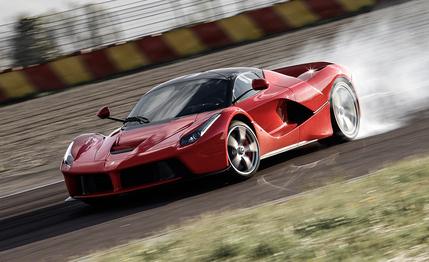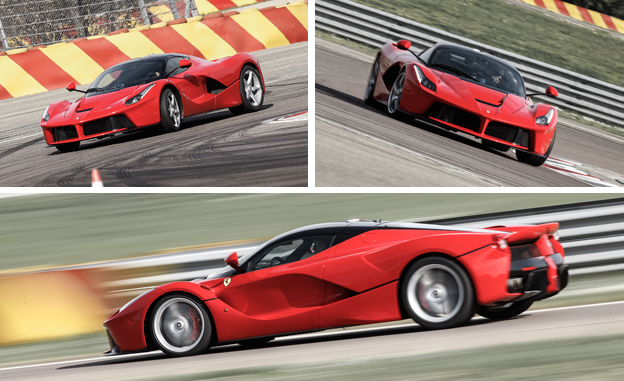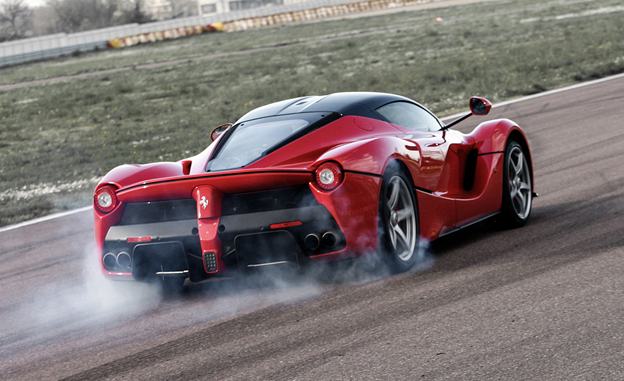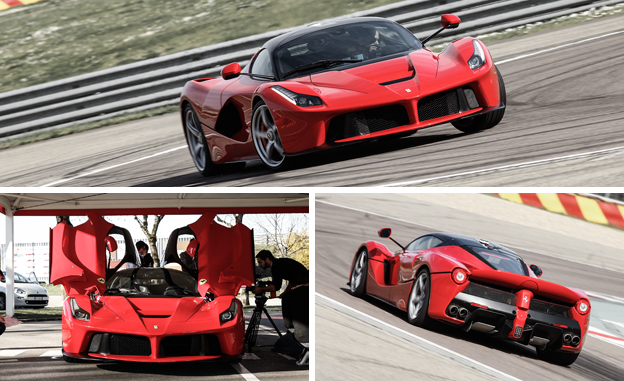 Instrumented Test
Instrumented Test
To test the Ferrari LaFerrari, we traveled to Italy to the storied marque’s personal track, Fiorano. Ferrari’s offer was this: We could either test there—or not at all. We chose to test.
The Fiorano circuit is nearly two miles long, a thirteen-turn rollercoaster built on what was once Italian farmland. Our usual testing venues, where we gather our zero-to-60-mph times, quarter-mile acceleration, braking figures, and grip numbers are nothing like racetracks. Putting a car through our battery of tests calls for a long, flat straight, usually one more than a mile in length, as well as a 300-foot skidpad to assess lateral acceleration.
But even when we test at our locations, Ferrari doesn’t just let us jump into its cars and test them. An engineer watches the proceedings and provides an often-valuable briefing on the subsystems of the car, and mechanics are there to swap out tires if necessary. When asked why all the bother, Ferrari says it wants the test to go smoothly and being there ensures that any problems that arise can be hammered out that day. Every modern Ferrari we’ve tested with the factory’s knowledge also had the automaker’s own test equipment inside the car to record what we’re doing and, as they tell us, as a backup should our own test equipment fail. We find this “generosity” completely unnecessary, however, and, aside from a recent McLaren 650S test, no other manufacturer proctors our normal battery of tests, and we test more than 200 cars per year.

0 to 60 mph: 2.5 sec
0 to 100 mph: 4.8 sec
0 to 150 mph: 9.8 sec
Standing ¼-mile: 9.8 sec @ 150 mph
Full disclosure: The Fiorano track introduces major limitations to our usual testing procedures. The straight has a slight kink in it as you pass under a bridge, and there’s not much space to accelerate beyond the quarter-mile. C/D procedure calls for running in two directions to offset any potential elevation changes and the effects of wind. Fiorano’s straight is ever so slightly downhill, but at least there was little to no wind on our test day. Ordinarily, we’d either reject the testing venue or we’d run in both directions and average the results. Running the straight in two directions is impossible, according to Ferrari, and reversing the FIA-approved racetrack would apparently poke the bureaucratic monster that rules over Italy. Or we might hit the bridge. Either way, that wasn’t happening. So we were unable to average our best runs in each direction and have to use the best in one direction here. The results, we must note, are uncorrected for ambient conditions, meaning they’re representative of what the LaFerrari did on this particular day. It’s the same policy we applied to our 2003 test of the Enzo, and, in any event, the weather correction wouldn’t have affected the LaFerrari numbers much at all.

That’s it with the caveats—apply an asterisk as you deem fit—but at Fiorano the LaFerrari produced the quickest acceleration to 150 mph of any production car we’ve ever tested. To 150 mph, the LaFerrari is a full 1.5 seconds quicker than the early Bugatti Veyron 16.4 we tested in 2008. Put up against the Porsche 918 Spyder, the LaFerrari traverses the quarter-mile in the same 9.8 seconds, but the Ferrari is going 150 mph at the traps versus the 918’s 145.
Making the performance even more remarkable is that the LaFerrari is rear-wheel drive. Ferrari’s launch control is easy to actuate and rips off consistent runs, but the 918’s four-wheel drive gives it an initial advantage. So the LaFerrari’s 2.5-second 0-to-60 romp can’t match the Porsche’s 2.2-second time to 60 mph. Initial traction gets the 918 to 60 in 114 feet; the LaFerrari needs 119. Still, the LaFerrari is pushing on your chest with a full g of force through 70 mph and it doesn’t taper off much after that. In the rolling 5-to-60-mph test, which removes the aggressive launch, the LaFerrari posted a 3.0-second time.

Beyond 60 mph, the 3489-pound LaFerrari’s superior power-to-weight ratio allows it to begin to pull away from the 3724-pound 918. The Ferrari’s combined 950 horsepower yields a 3.7-pound-per-horsepower ratio; each of the 918’s horses moves 4.2 pounds. In the Ferrari, the century mark passes in a what-the-hell-was-that 4.8 seconds—one-tenth quicker than the 918. And there’s the aforementioned advantage to 150. At one of our normal testing venues, we could have pushed well past 150 mph, but at Fiorano we had to be hard on the brakes a blink after the speedometer indicated that speed.
At least the LaFerrari’s braking numbers don’t require any hemming or hawing. There’s enough of a flat and even surface before Turn Twelve to perform our 70-to-0-mph test. Stops from 70 took only 136 feet, and the LaFerrari hooks to the ground as if it stubbed its toe. Regenerative braking can erase up to 0.4 g of braking force, but the big carbon-ceramic rotors are the main retardants. Stops are repeatable and incredibly stable due to the dynamic aero that flips up the air brakes under severe deceleration. Pirelli P Zero Corsa tires developed for the LaFerrari are the only rubber available. When asked if Pirelli’s stickier Trofeo R rubber was considered, an engineer quipped, “Our owners might have to drive home in the rain.” A clear criticism of the slick tires that General Motors puts on the Camaro Z/28, and not the first time Ferrari personnel commented to us on the Z/28’s rubber. We’ve driven the Z/28 in the rain, though, and it’s not impossible. Which leaves us dreaming of a LaFerrari on Trofeo Rs.